
Rust vs C++: Successor or Pretender? Honest Opinion of our CTO
As systems grow more complex and reliability becomes mission-critical, developers face an old but still unsolved dilemma: should you build […]
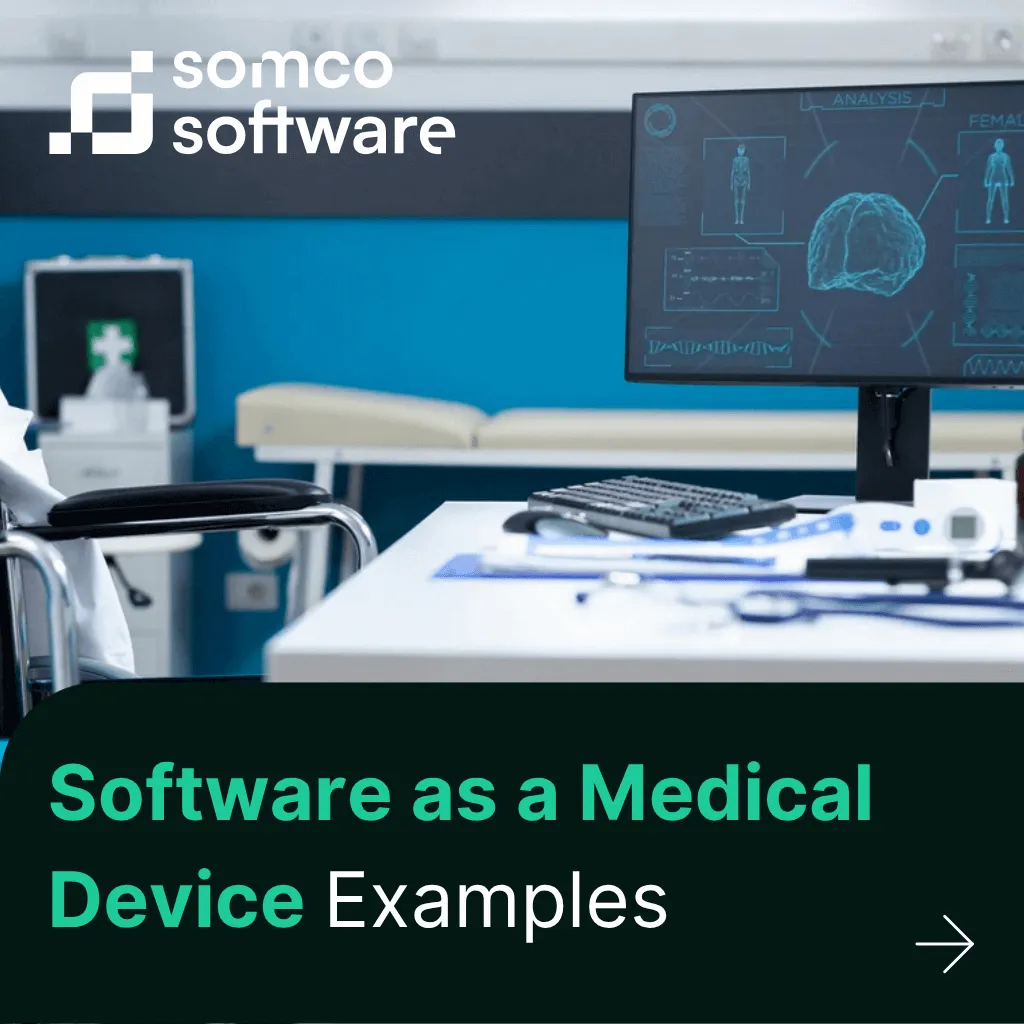
Software as a Medical Device (SaMD) refers to software that is intended for medical purposes (such as diagnosing, treating, curing, mitigating, or preventing disease) without being part of a physical hardware medical device. In other words, SaMD is standalone medical device software that functions as a medical product in its own right. It is widely used by health care professionals to support accurate diagnostics and treatment decisions.
SaMD can range from simple mobile apps that let doctors view X-ray or magnetic resonance imaging results on their phones to advanced AI algorithms that detect cancer in medical scans. In every case, the key criterion is that the software has an intended medical purpose and is not just a general wellness or fitness tool.
Here, you will learn:
No matter if you are starting or already in SaMD our Medical Device Software Development Services can support you.
SaMD can take many forms. The FDA and international regulators have outlined several general scenarios and characteristics that qualify software as a medical device. Common examples and use-cases include:
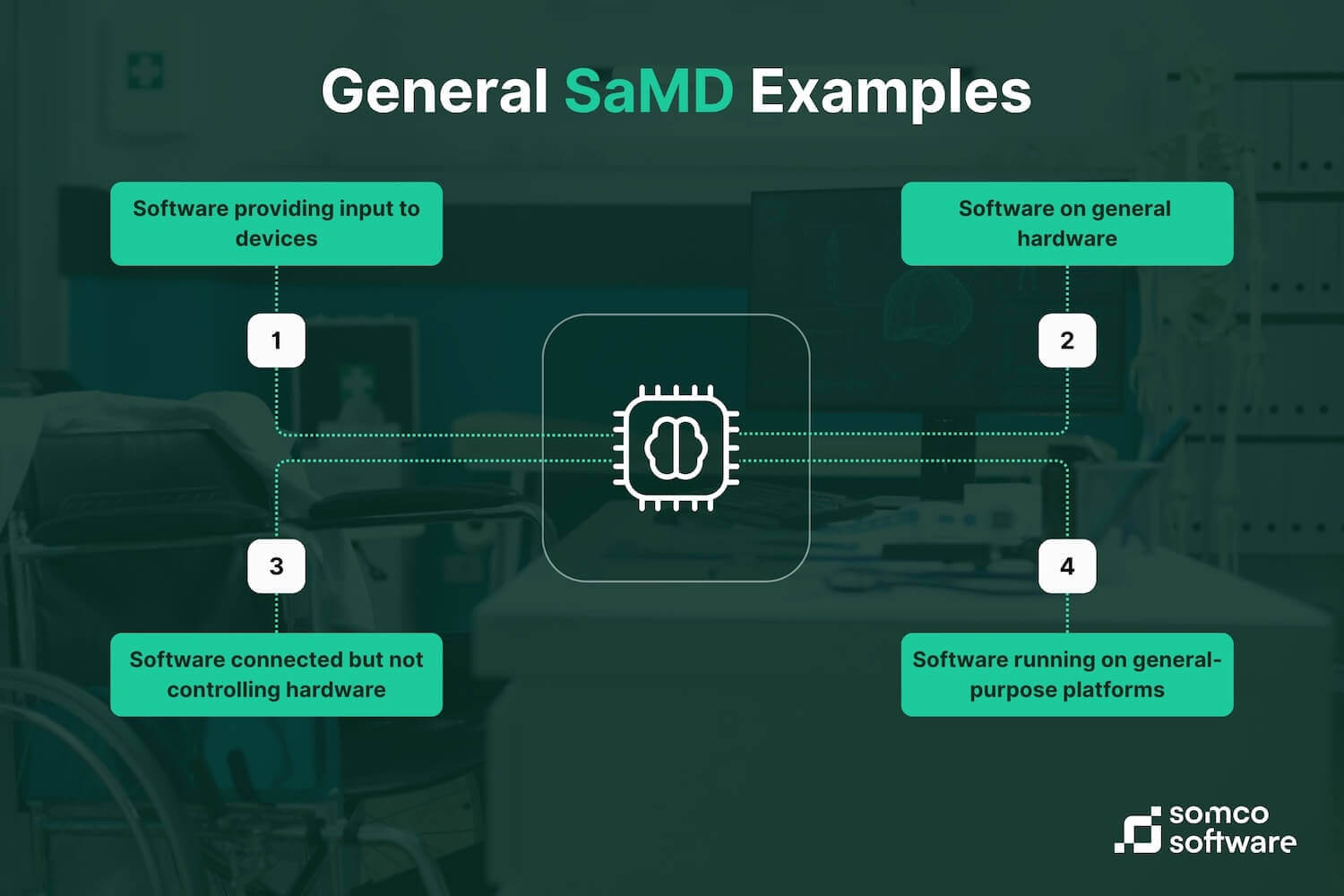
These general examples illustrate the flexible nature of SaMD – it can be standalone but interface with devices, run on everyday electronics, and perform a wide array of software functions that have a direct medical impact through software alone. Below, we explore specific categories of SaMD software and how they improve healthcare.
One of the most prominent categories of SaMD is diagnostic software. This type of medical software assists healthcare professionals in detecting or diagnosing diseases by analyzing medical data (often images or signals).
For example, diagnostic SaMD might process radiological images (X-rays, CT scans, MRIs) to highlight abnormalities or measure anatomies, aiding radiologists in interpretation. Such software can quickly analyze imaging data with advanced algorithms, acting as a second pair of eyes to improve accuracy and speed in diagnosis.
Computer-Aided Detection (CAD) programs for medical imaging are a prime example: they perform image post-processing to help detect conditions like breast cancer or lung nodules on scans.
Other diagnostic SaMD includes imaging viewers and analysis tools (e.g. DICOM viewers, 3D reconstruction software) that allow clinicians to view and manipulate medical images on general devices. By facilitating more precise assessments, diagnostic software SaMD contributes to patient safety and better clinical outcomes through earlier and more accurate detection of health issues.
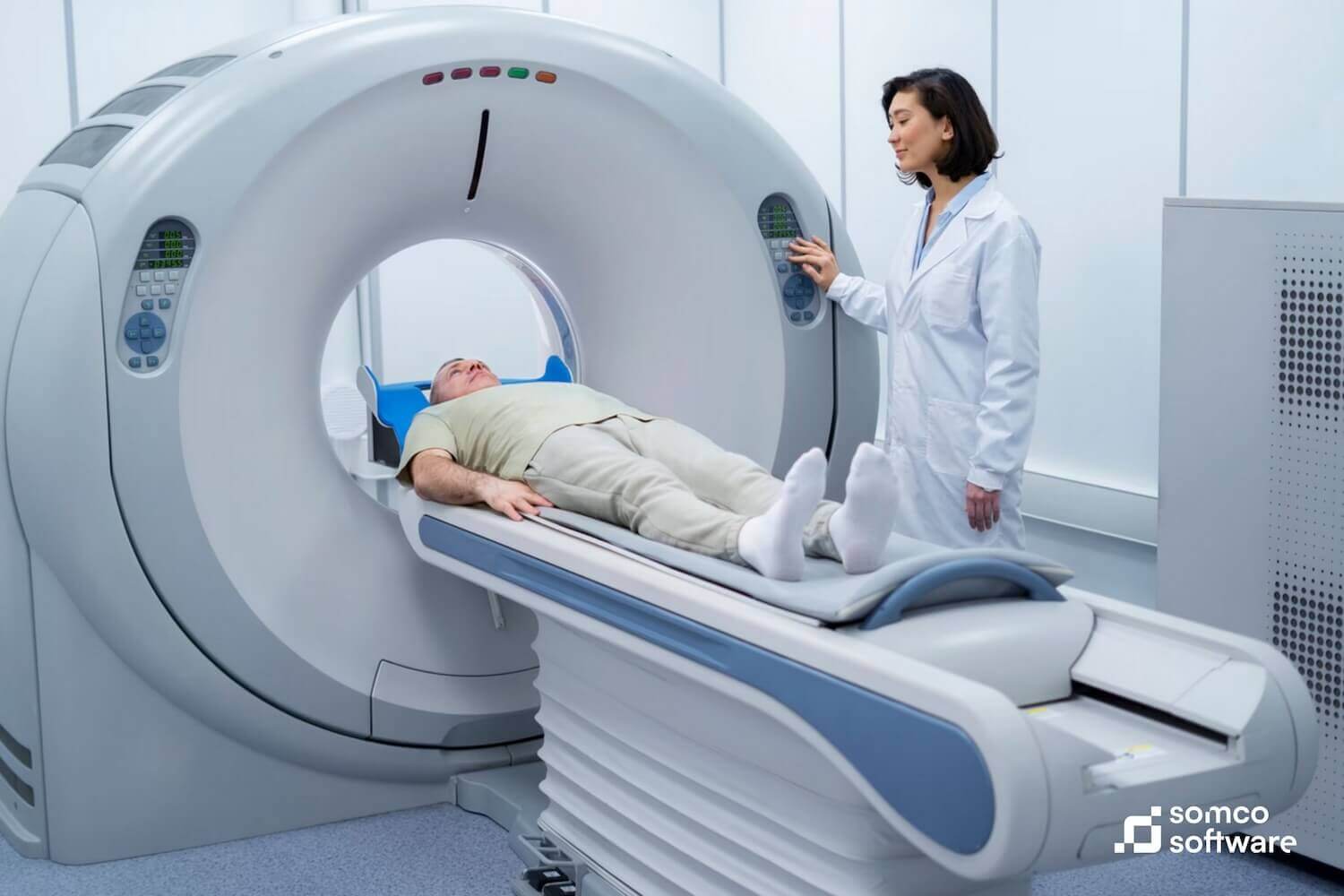
Image processing and segmentation software is a category of SaMD focused on preparing, enhancing, or structuring medical images to support further clinical use. Rather than providing a diagnosis, these applications automate technical steps such as segmenting organs, lesions, or anatomical structures, or generating 3D reconstructions from imaging data.
The goal is to make images easier to interpret and use – whether for diagnostic review, surgical navigation, or treatment planning – while reducing manual effort and improving reproducibility.
For example, segmentation software might automatically outline a tumor on a CT scan so that clinicians can more quickly calculate its volume or plan radiation therapy. Similarly, 3D reconstruction tools can create virtual models of a patient’s anatomy to assist surgeons in preoperative planning.
The key point is that this type of software prepares data for clinical decision-making but does not itself determine whether a condition is present – distinguishing it from diagnostic SaMD.
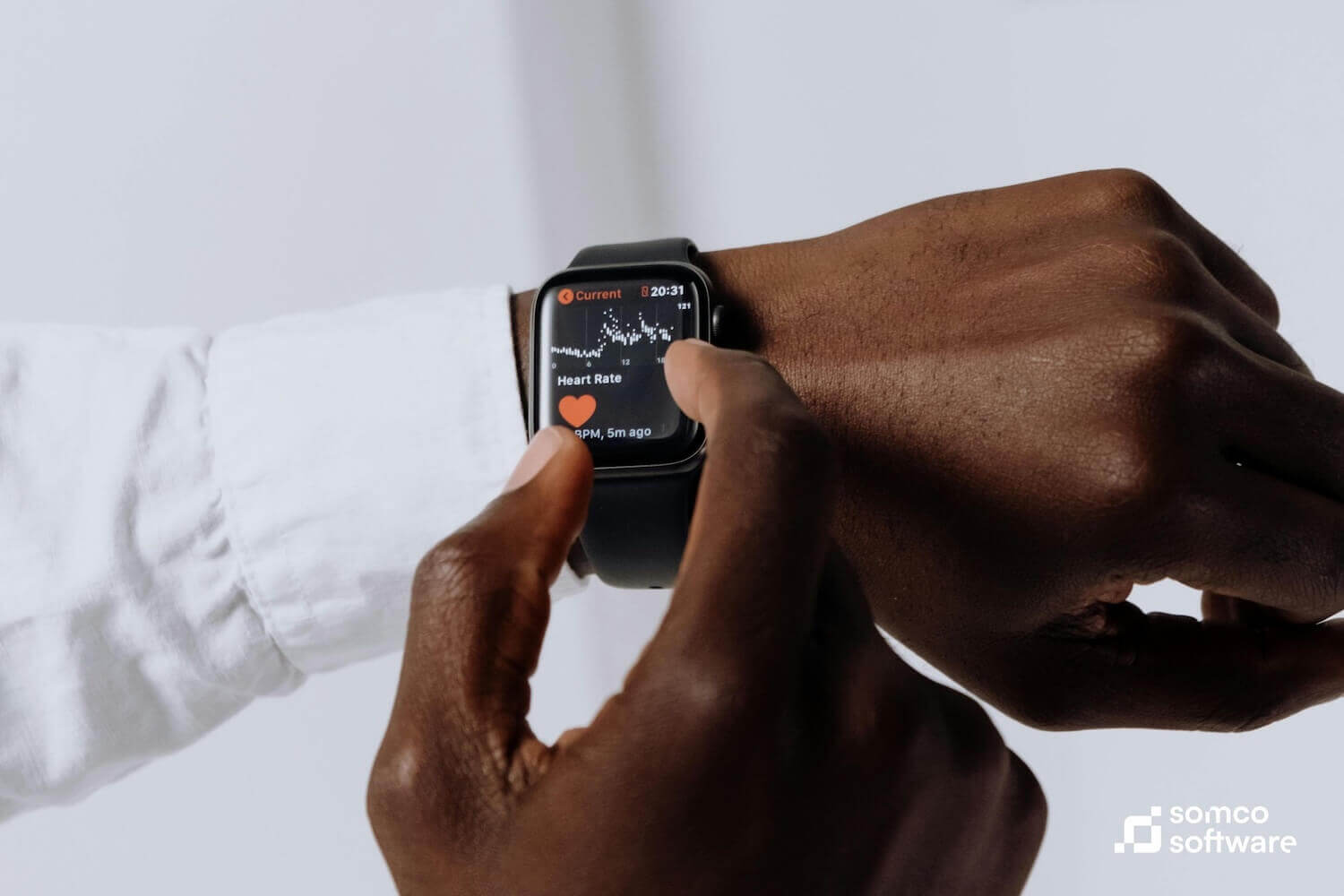
Health monitoring software is a category of SaMD focused on tracking and analyzing health-related data to support ongoing care or wellness management. Unlike hardware monitors (like blood pressure cuffs or glucose meters) that physically measure parameters, this software typically takes user-entered data or data from wearable sensors and interprets it for medical insights.
These applications can cover anything from daily health logging (weight, diet, symptoms) to more specific monitoring of chronic conditions. The SaMD analyzes trends in the data and can alert the user or healthcare providers to any worrying changes.
For instance, a health monitoring app might compile a patient’s blood pressure readings over time and detect a trend of hypertension, prompting the patient to seek medical advice.
Some monitoring software also connects to devices like fitness trackers or smartwatches to receive vital sign data (heart rate, oxygen level, etc.), and then generates alerts if the values move outside safe ranges.
The key is that the software itself is making a medical assessment or recommendation based on the input data – that functionality defines it as a medical device (SaMD) rather than just a wellness app. Many of these platforms also include patient registration features that link monitoring data with clinical records for better care coordination.
Screening and risk prediction software is a category of SaMD designed to identify individuals at risk of developing a condition – often before symptoms appear. These solutions analyze data such as patient history, demographics, lab results, or genetic information to flag people who may require closer monitoring or early intervention.
Such applications are particularly useful for large-scale screening programs or for stratifying patients based on their risk level. They also play an important role in clinical management, enabling early detection and preventive action. The SaMD processes the available data, calculates risk scores, and highlights cases where preventive measures could be beneficial.
For instance, a cardiovascular risk prediction app might combine cholesterol levels, blood pressure, and lifestyle data to estimate a patient’s likelihood of developing heart disease. Based on this output, a physician can recommend preventive treatment, lifestyle changes, or further testing.
The defining characteristic is that the software itself performs the risk calculation or screening logic, providing a medically relevant output rather than just displaying raw data.
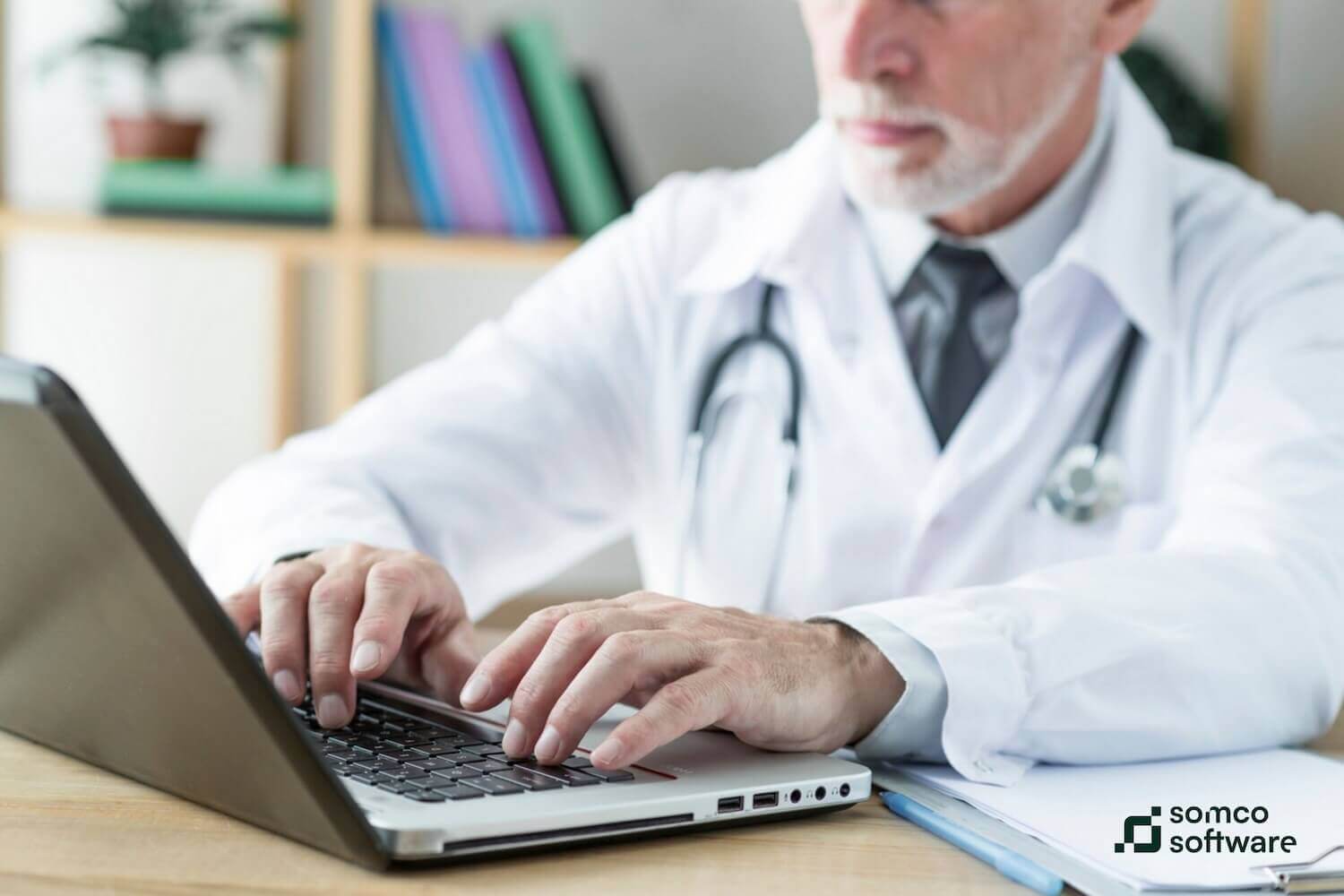
Clinical decision support (CDS) software is a category of SaMD designed to assist healthcare professionals in making accurate, evidence-based clinical decisions. Rather than just displaying patient data, these applications interpret the information and generate recommendations that can be acted upon in real time.
The software typically integrates patient-specific data with medical guidelines, clinical research, or local treatment protocols to deliver tailored insights. This helps clinicians improve care quality, reduce errors, and streamline decision-making.
For example, a CDS tool might analyze a patient’s medication list and alert the clinician to a potential drug interaction before a new prescription is confirmed. Another example is software that reviews lab results and recommends an appropriate antibiotic based on local resistance patterns.
The defining feature is that the software actively supports clinical judgment by transforming data into actionable guidance – a key characteristic that classifies it as SaMD. Additionally, CDS software often enables clinical communication between different care teams, improving treatment coordination.
Prognostic software is a category of SaMD focused on predicting the likely course of a disease or estimating patient outcomes. By analyzing clinical data, disease characteristics, and patient-specific factors, these applications give clinicians insight into what might happen next – helping them plan treatment and follow-up strategies more effectively.
Such software can be particularly useful in complex conditions where the progression is uncertain or varies widely between patients. The SaMD processes relevant data to produce outcome predictions or risk scores that inform decisions about therapy intensity, monitoring frequency, or additional testing.
For example, oncology prognostic software might combine tumor characteristics, patient age, and biomarker profiles to estimate the likelihood of cancer recurrence. Based on these predictions, physicians can decide whether to recommend adjuvant therapy or schedule closer follow-up.
The key characteristic is that the software delivers a forward-looking medical insight rather than just describing the current state of the patient’s health.
Treatment planning software is a category of SaMD designed to calculate and optimize therapy parameters for individual patients. These applications ensure that treatments are precise, safe, and tailored to the patient’s specific anatomy or condition.
The software often works by creating a detailed digital model of the patient, using imaging data or other clinical inputs, and then simulating the planned therapy. This allows clinicians to refine treatment settings before any procedure takes place, reducing risk and improving outcomes.
For example, radiation therapy planning software can determine the optimal beam angles and dosage to target a tumor while minimizing exposure to healthy tissue. Similarly, surgical planning tools can generate a 3D model of a patient’s anatomy to simulate the placement of an implant or prosthesis before the actual operation.
The defining feature is that the software directly supports the design of a treatment strategy, turning patient-specific data into actionable plans for clinicians or connected medical devices.
Another exciting class of SaMD is therapeutic software, often referred to as digital therapeutics (DTx). These applications deliver medical interventions or therapy to patients directly via software, rather than through a pill or physical procedure.
Therapeutic SaMD can guide patients through evidence-based treatment protocols for a variety of conditions – ranging from mental health disorders and insomnia to rehabilitation from injuries or management of chronic diseases.
For example, a therapy app might use cognitive behavioral therapy (CBT) techniques to help users manage anxiety or depression, with interactive exercises and feedback provided through the software. Similarly, a rehabilitation app could prescribe and demonstrate physical therapy exercises for a patient recovering from surgery, adjusting the difficulty based on the patient’s progress.
These software interventions are personalized and adaptive, often leveraging algorithms and patient-input data to tailor the treatment to the individual.
One particularly innovative example of a therapeutic SaMD is the use of virtual reality (VR) for cognitive and neurological therapy. For instance, researchers have developed VR-based programs for elderly patients with dementia: the patient wears a VR headset and engages in memory and cognition exercises in an immersive environment.
Companion software is a category of SaMD designed to work alongside a specific drug or medical device to optimize its use. Although it operates independently from the hardware or drug delivery mechanism, it provides clinically meaningful recommendations that guide how the therapy should be administered.
These applications use patient-entered data or real-time measurements to calculate personalized dosing, adjust treatment schedules, or support adherence. By doing so, they help ensure that patients receive the right therapy at the right time, improving both safety and effectiveness.
For example, an insulin-dosing calculator might combine glucose readings, meal information, and planned activity levels to recommend the correct insulin dose. Another example is a medication management app that modifies reminder schedules based on reported side effects or clinical feedback, helping patients stay compliant with their treatment plan.
The key feature is that the software actively tailors therapy to the individual patient, turning raw input data into actionable treatment recommendations.
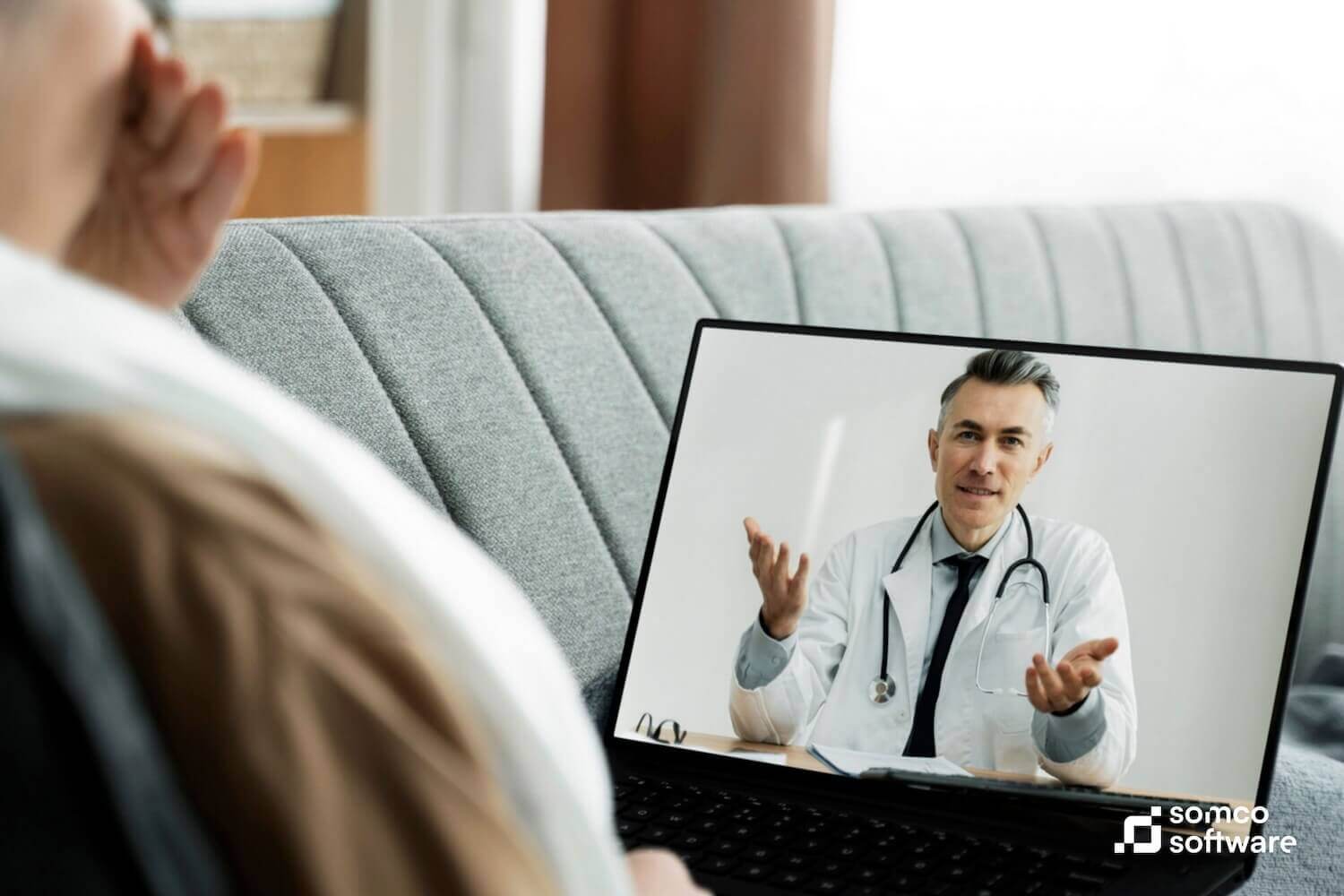
Telemedicine software is a category of SaMD that enables remote medical consultations and care delivery through secure digital platforms. These applications connect patients and clinicians virtually, making it possible to conduct clinical assessments and deliver treatment recommendations without requiring an in-person visit.
Typical telemedicine solutions combine features such as scheduling, video consultations, secure messaging, and sometimes integration with remote monitoring devices. This creates a comprehensive virtual care environment that supports both real-time and asynchronous communication.
For example, a telemedicine app might allow a physician to review a patient’s reported symptoms and connected vital sign data, discuss findings during a video call, and issue a prescription — all within the same platform.
The defining characteristic is that the software provides a medically actionable service remotely, enabling care delivery while meeting regulatory requirements for safety and privacy.
Software as a Medical Device is revolutionizing healthcare by expanding what can be achieved with purely software-driven solutions. This rapidly growing field holds significant potential for improving patient outcomes and reducing healthcare costs.
However, it’s important to recognize that SaMD products carry the same responsibility as traditional medical devices when it comes to patient safety. Regulatory bodies like the FDA and EU authorities require SaMD to meet rigorous standards for quality, efficacy, and data security.
Let’s talk about your SaMD project! Our team specialize in software development for regulated SaMD solutions and can help you navigate the entire software development process — from concept validation to launch — while aligning with the requirements of the healthcare industry (View Our Certifications.)
Let's face it? It is a challenge to get top Qt QML developers on board. Help yourself and start the collaboration with Somco Software - real experts in Qt C++ framework.
Discover our capabilities
As systems grow more complex and reliability becomes mission-critical, developers face an old but still unsolved dilemma: should you build […]
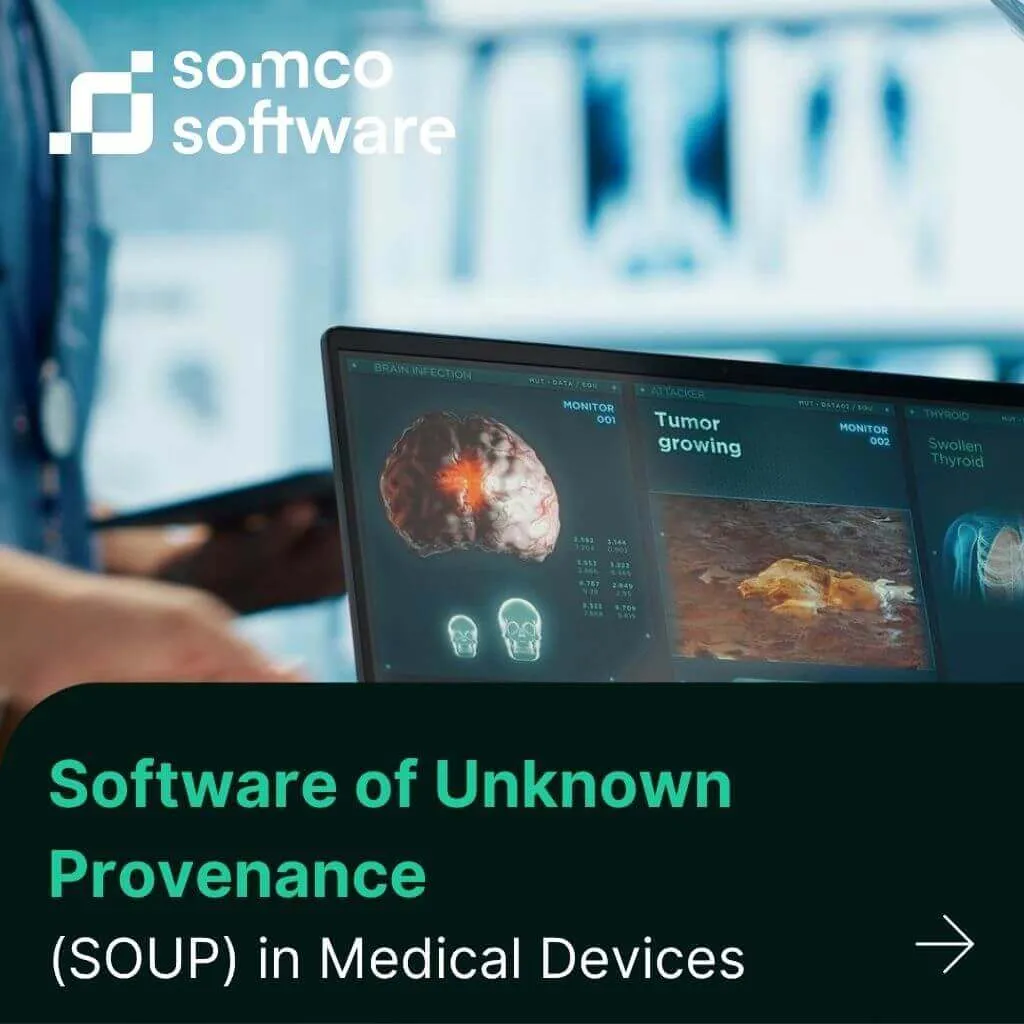
In the projects we deliver at Somco for medical device manufacturers, the topic of SOUP almost always comes up. Whether […]
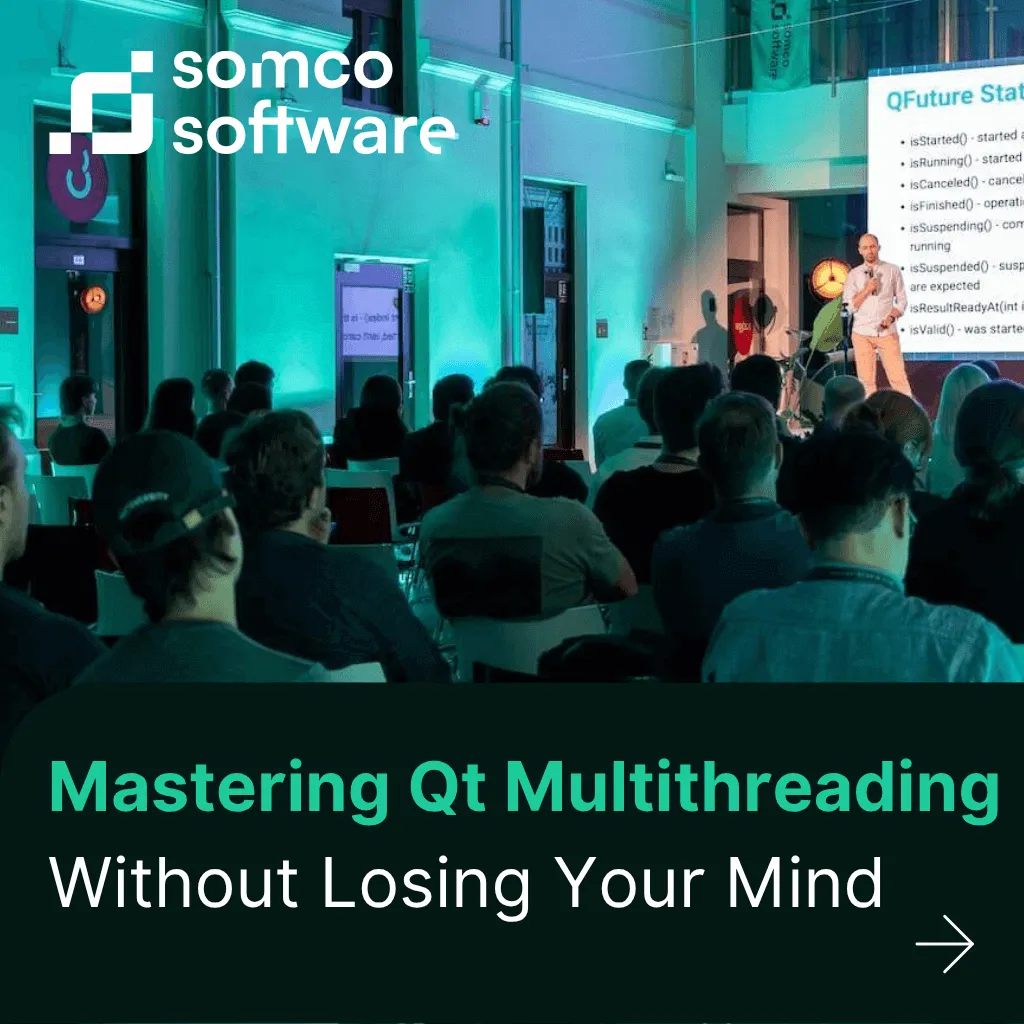
As applications get more complex and performance expectations rise, multithreading becomes essential. In my experience, Qt provides a powerful — […]